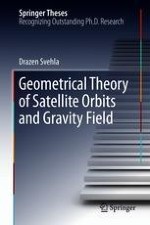2018 | OriginalPaper | Buchkapitel
22. Earth Orientation Quaternion
verfasst von : Dr. Drazen Svehla
Erschienen in: Geometrical Theory of Satellite Orbits and Gravity Field
Aktivieren Sie unsere intelligente Suche, um passende Fachinhalte oder Patente zu finden.
Wählen Sie Textabschnitte aus um mit Künstlicher Intelligenz passenden Patente zu finden. powered by
Markieren Sie Textabschnitte, um KI-gestützt weitere passende Inhalte zu finden. powered by
